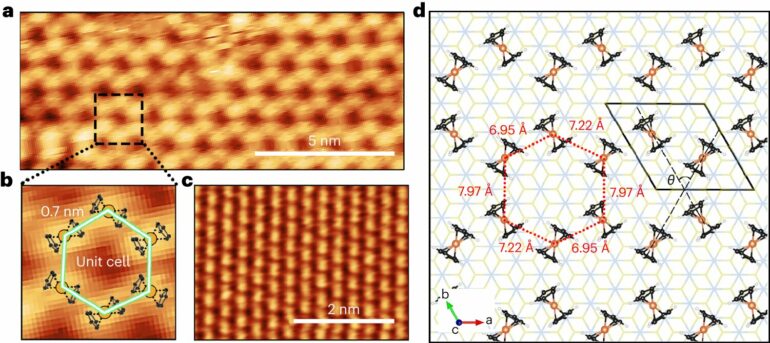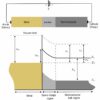In some materials, spins form complex magnetic structures within the nanometer and micrometer scale in which the magnetization direction twists and curls along specific directions. Examples of such structures are magnetic bubbles, skyrmions, and magnetic vortices.
Spintronics aims to make use of such tiny magnetic structures to store data or perform logic operations with very low power consumption compared to today’s dominant microelectronic components. However, the generation and stabilization of most of these magnetic textures is restricted to a few materials and achievable under very specific conditions (temperature, magnetic field, etc.).
An international collaboration led by HZB physicist Dr. Sergio Valencia has now investigated a new approach that can be used to create and stabilize complex spin textures, such as radial vortices, in a variety of compounds. In a radial vortex, the magnetization points towards or away from the center of the structure. This type of magnetic configuration is usually highly unstable.
Within this novel approach, radial vortices are created with the help of superconducting structures, while the presence of surface defects achieves their stabilization.
Superconducting YBCO-islands
Samples consist of micrometer-sized islands made of the high-temperature superconductor YBCO on which a ferromagnetic compound is deposited. On cooling the sample below 92 Kelvin (-181 °C), YBCO enters the superconducting state.
In this state, an external magnetic field is applied and immediately removed. This process allows the penetration and pinning of magnetic flux quanta, which in turn creates a magnetic stray field.
It is this stray field that produces new magnetic microstructures in the overlying ferromagnetic layer: spins emanate radially from the structure center, as in a radial vortex.
The role of defects
As the temperature is increased, YBCO transits from the superconducting to a normal state. So, the stray field created by YBCO islands disappears, and so should the magnetic radial vortex. However, HZB researchers and collaborators have observed that the presence of surface defects prevents this from happening: the radial vortices partially retain the imprinted state, even when approaching room temperature.
“We use the magnetic field generated by the superconducting structures to imprint certain magnetic domains on the ferromagnets placed on them and the surface defects to stabilize them. The magnetic structures are akin to that of a skyrmion and are interesting for spintronic applications,” explains Valencia.
Geometry matters
Smaller imprinted vortices were about 2 micrometers in diameter, about 10 times the size of typical skyrmions. The team studied samples with circular and square geometries and found that circular geometries increased the stability of imprinted magnetic radial vortices.
“This is a novel way to create and stabilize such structures and it can be applied in a variety of ferromagnetic materials. These are good new prospects for the further development of superconducting spintronics,” says Valencia.
The study is published in the journal ACS Applied Materials & Interfaces.
More information:
David Sanchez-Manzano et al, Size-Dependence and High Temperature Stability of Radial Vortex Magnetic Textures Imprinted by Superconductor Stray Fields, ACS Applied Materials & Interfaces (2024). DOI: 10.1021/acsami.3c17671
Provided by
Helmholtz Association of German Research Centres
Citation:
Spintronics: A new path to room temperature swirling spin textures (2024, April 17)



